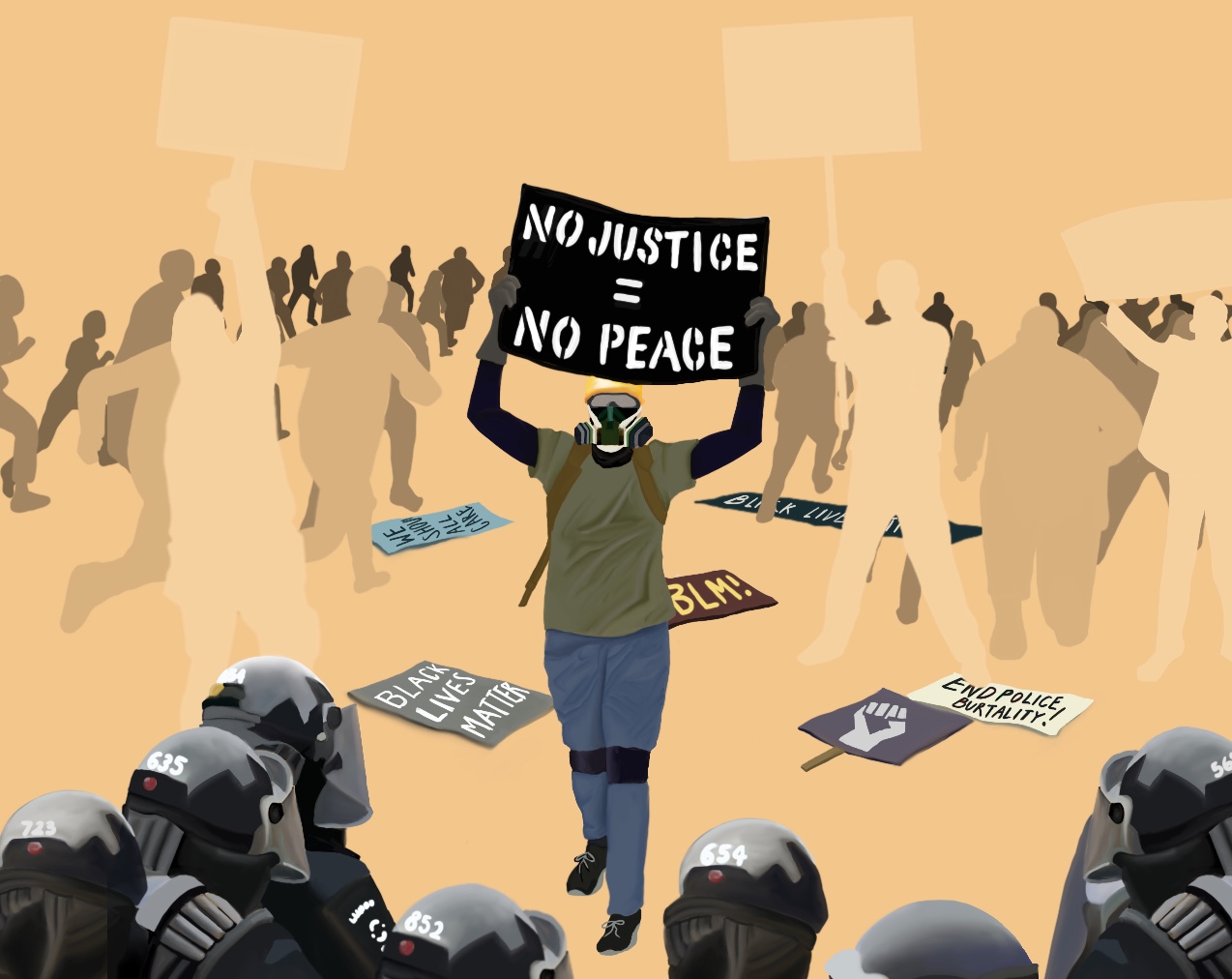GRAPHIC DESIGNER Jennifer Ji
Protests are a powerful tool for change. Change is an ongoing action that often only occurs when boundaries are pushed and risks are taken; the difficult but true reality of the history behind protesting is the violent nature many have taken.
Current and continued protests surrounding the Black Lives Matter movement are helping push societal boundaries in order to demand justice that is in many cases, long overdue.
Exploring clothing in the context of advocacy incurs how to use the universal language of dress as a tool to protect and aid continued social justice action.
Among the multitude of functions clothing has from an aesthetic standpoint, clothing in itself and quite possibly its truest form is used to conceal and protect our bodies from external conditions. Exploring clothing in the context of advocacy incurs how to use the universal language of dress as a tool to protect and aid continued social justice action.
According to a medicinal antidote entitled ‘Medicinal Antidotes from Dr. Chili: How to Protect Yourself Against the Effects of Chemical Weapons’, there are clothing and personal care recommendations that make a significant difference in protecting the body during a protest. The basis of this antidote will be used to explain the following protective measures suggested below.
General clothing and personal care guidelines
When aiming to protect oneself during a protest, begin by dressing in layers and covering all parts of the body as much as possible. Wearing water-repellent and synthetic outer layers of clothing at the waist, ankles or wrists will prevent chemicals from reaching the skin. Avoiding fuzzy clothing such as heavy cotton or wool is ideal, as these materials trap tear gas and pepper spray. Beforehand, it is also recommended that the hair, scalp, and body is washed with a non-scented castile soap on the day of the protest. This is done in order to remove any oils or dead skin cells that may help bind chemicals to the skin.
Protecting the head & Face
When dressing to protect the head and face during a protest, begin by making proper skin care decisions to lessen dangerous effects. Do not use sunscreen, makeup, skin moisturizers, or any oil-based products on the face; eye contact lenses should not be worn, in order to avoid corneal damage from chemicals. Do not use vaseline or mineral oil for protection, instead apply water or alcohol-based sunscreen if needed. Wearing a wide-brimmed, insulated hat will also maximize protection for the head.
If extra protection is required around the face, an alternative to wearing a gas mask may also be using swimming goggles. Use goggles with a respirator that covers the nose and mouth, as well as shatterproof lenses.
Protecting the neck
When protecting the neck, covering the skin with a scarf and/or fume mask can be used to provide protection; synthetic or water-repellent materials are key.
Protecting the Torso & Legs
Again, it should be emphasized how crucial layers are. Waterproof gloves, windbreakers, and light rain gear are useful when layering the body for weather and chemicals. If possible, carrying a bag with extra clothing is recommended, as is writing important numbers on one’s arm is also a smart choice in case of an emergency. Making sure to cover as much of the body as possible will optimize protection from any external chemicals. Wearing full-length pants overtop of a bottom layer (water-resistant sports tights) is useful to note; knee pads may also be worn for extra protection and cushion.
Foot Protection
It is most important to ensure that one’s feet are dry, comfortable, and especially safe. Wear close-toed, comfortable footwear that is easy to walk and run around in for the entirety of the day.
Useful & simple items/accessories to bring
Bringing a backpack is useful to store extra items needed to aid any chemical reactions and/or re-energize oneself during a protest. Pack a bandana soaked in apple cider vinegar in a ziplock bag, this will help provide temporary relief from tear gas chemicals when holding the bandana up to the nose and mouth. Keeping an extra change of clothes packed can also be useful, as is packing cash instead of cards – in the event your bag is confiscated. Finally, be sure to remain hydrated and keep a water bottle in your bag, and have your ID on you at all times.


























